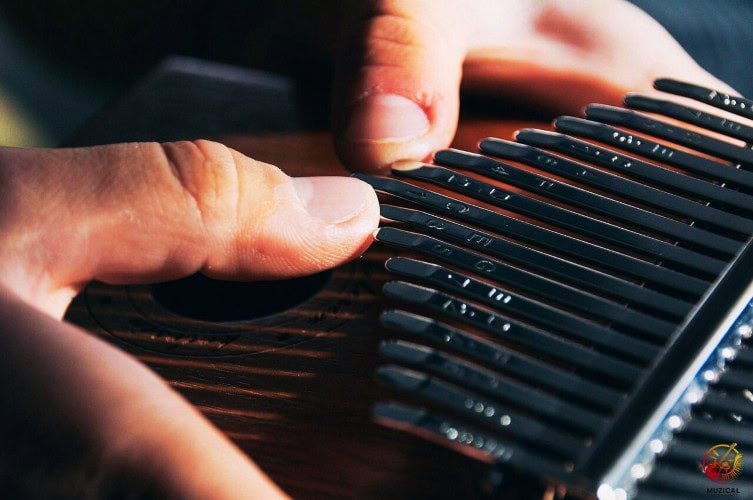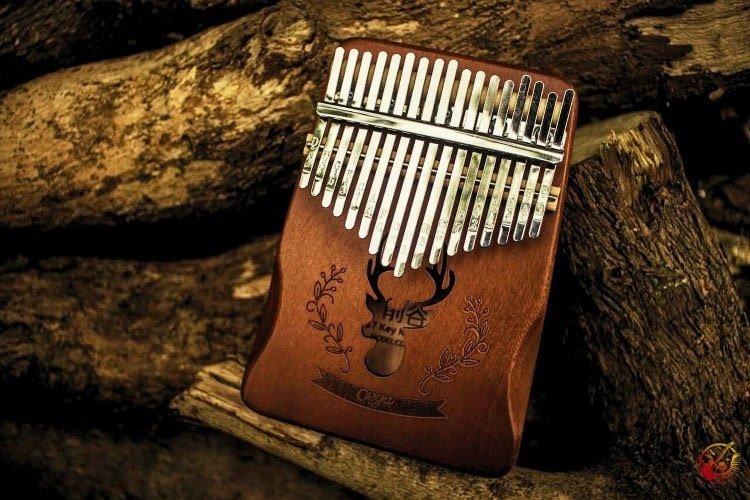Can You Use a Kalimba for Sound Healing?
The kalimba is more than a pretty instrument with a sweet sound. Many people now use it for emotional healing, stress relief, and deep meditation. Yes, you can absolutely use a kalimba for sound healing, and its gentle vibrations may be exactly what your mind and body need.
You live in a noisy world. The hum of screens, constant notifications, and fast-paced routines can throw your nervous system out of balance. Sound healing has become a powerful way to bring calm back into your life.
But here’s the surprising part: while gongs, singing bowls, and tuning forks get a lot of attention, the kalimba often called the thumb piano is somewhat overlooked but it is one of the most calming sound tools you can use.
Here you’ll learn:
- How the kalimba fits into the world of sound healing
- The science behind calming musical vibrations
- You’ll get real examples of how to use it in self-care, meditation, and emotional wellness
- Why its healing frequencies are especially good for beginners.
Let’s dive in and find out why this little instrument might be your new favorite tool for peace.
Why Is the Kalimba So Effective for Sound Healing?
The kalimba’s sound is soft, pure, and resonates deeply and that’s exactly what your nervous system loves. Unlike harsh or loud instruments, kalimba vibrations are subtle and soothing, making them ideal for relaxing your body and mind.

When you pluck a kalimba tine, the vibration travels not just through the air but also into your hands. That physical vibration creates a gentle grounding sensation. This is important because grounding sound tools help slow your thoughts and calm your emotions.
Let’s compare the kalimba to other popular healing instruments:
| Instrument | Vibe Quality | Vibration Type | Learning Curve | Best Use Case |
|---|---|---|---|---|
| Singing Bowl | Deep, echoing | Resonant, circular | Medium | Group meditation, chakra work |
| Tuning Fork | Sharp, specific | Directed vibration | High | Energy healing sessions |
| Gong | Loud, immersive | Full-body resonance | Low | Sound baths, ceremonies |
| Kalimba | Soft, melodic | Gentle, rhythmic | Very Low | Personal therapy, daily use |
That’s one reason kalimba for sound healing has become so popular. You don’t need years of training to feel the benefits. Even a simple melody can help shift your energy. In fact, many therapists now include the kalimba in music therapy sessions because it’s intuitive and non–threatening. Clients can start playing right away, and that boosts confidence and emotional expression.
Kalimbas are tuned to specific keys that promote harmony. The standard C major tuning is often used in soft instrumental healing music. It naturally aligns with calming emotional states.
Pro Tip:
If you’re just getting started, try a 17-key kalimba in C major. It’s the most versatile tuning for sound healing beginners.
What Happens to Your Body When You Play or Listen to Kalimba?
Sound touches every part of your nervous system. When you play or listen to calming thumb piano tunes, your body begins to shift. Muscles relax. Your heart rate may slow. Even your breathing becomes deeper.
Here’s how kalimba music therapy works on your body and mind:
- Brainwaves slow down. The kalimba produces frequencies in the alpha and theta range. These brain states are linked to creativity, meditation, and calm.
- Cortisol drops. As stress melts away, your body releases fewer stress hormones. This can lead to better sleep and fewer anxiety symptoms.
- Vagus nerve activation. The soothing tones stimulate your vagus nerve, which controls rest and digestion. That’s why kalimba can make you feel deeply relaxed, even sleepy.
Let’s break it down with a simple visual:
| Body Part or System | Kalimba’s Effect |
|---|---|
| Brain | Slows activity, promotes calm thinking |
| Heart | Reduces heart rate through rhythmic flow |
| Lungs | Encourages slower, deeper breathing |
| Muscles | Releases tension through soothing vibration |
| Skin | Feels subtle resonance in hands/fingers |
You don’t have to play complex songs. Even simple repetitive tones can create soothing vibrations for therapy. The key is consistency. Play for just 5-10 minutes a day and your body will begin to associate the sound with safety and rest.
How Do You Use a Kalimba in Meditation and Sound Baths?
You can use a kalimba for sound healing in your meditation sessions to ground your thoughts, shift your energy, or open your heart. It fits perfectly into quiet routines and doesn’t interrupt your focus.

Start by holding the kalimba close to your body. Let your thumbs move slowly over a few notes. You can close your eyes or focus on the sound. The meditative tones with kalimba help your mind settle gently.
Here are a few ways to use it in practice:
1. Solo Meditation
Sit cross-legged with the kalimba in your lap. Pick a simple 3-note pattern and repeat it slowly. Let your breath follow the rhythm. This can work like a mantra.
2. Sound Bath with Kalimba
Play the kalimba over someone lying down. Move slowly around their body, letting the notes drift across their energy field. This works well with chakra-focused intentions.
3. Group Healing Sessions
Use kalimba at the beginning or end of a group meditation. The sound is non-invasive but still powerful enough to shift the energy of the room.
Chakra Use Example:
Certain notes on the kalimba match chakra frequencies. Playing the root notes helps with grounding, while higher notes can balance your crown chakra.
| Chakra | Kalimba Note (C major scale) | Intentional Focus |
|---|---|---|
| Root | C | Grounding, safety |
| Heart | F | Love, emotional release |
| Crown | B | Spiritual connection |
Kalimba is a peaceful instrument for meditation, and its portability means you can take it to the park, beach, or yoga studio.
Is Kalimba Helpful for Emotional Healing and Anxiety?
Yes, very much so. One of the most powerful uses of kalimba is emotional healing with music. Its simple, gentle sound lets you process emotions without needing words.

In therapy sessions, clients often use the kalimba to:
- Release stuck emotions
- Express sadness, fear, or joy without speaking
- Ground themselves after a trauma memory
- Feel present during anxiety attacks
Think of it this way anxiety calming instruments don’t have to be loud or dramatic. The kalimba’s soft voice offers safety. You can use it alone or with a therapist. Some people keep it by their bed and use it during panic attacks to refocus the mind and body.
This is where the concept of sound healing for sleep also comes in. Playing the kalimba before bed can become part of a calming routine. It tells your body, “It’s okay to relax now.”
Expert Insight:
“The kalimba doesn’t overwhelm the nervous system. It invites the body into stillness instead of pushing it there.” — Dr. Leah Tran, Holistic Music Therapist
Many trauma–informed counselors now include the kalimba for sound healing in their practice. It allows healing through action, without pressure to explain.
How Can You Add Kalimba to Your Self-Care Routine?
You don’t need a special setup to use kalimba for healing. You just need a few quiet minutes and a willingness to listen. Here are easy ways to add it to your day:
- Morning grounding: Play 3-5 calming thumb piano tunes before you check your phone.
- Midday stress reset: Use it for five minutes after a tense meeting or call.
- Bedtime calm: End your day with soft instrumental healing music from your kalimba.
- Movement practice: Pair it with slow stretches or yoga to create rhythm in your body.
- Emotional journaling: Play while you write, letting your mood guide the melody.
Many people also combine kalimba with energy cleansing through sound. You can use it to shift the feeling in your room, reset your energy after a stressful day, or set intentions before a new task.
Think of it as a musical breath. A way to pause, return to yourself, and soften the edges of your thoughts.
What Should You Look for in a Kalimba for Sound Healing?
Not all kalimbas are equal when it comes to healing. Some are made cheaply and don’t hold their tuning well. If you’re exploring the kalimba for sound healing, it’s important to choose one that’s built with quality and care.
For the best results, look for instruments made of natural wood such as acacia or mahogany. These woods produce natural sound instruments for healing with deeper resonance.
Key Features to Consider:
| Feature | Why It Matters for Healing |
|---|---|
| Solid wood body | Enhances tone warmth and vibration |
| C major tuning | Easy to play and harmonically balanced |
| Smooth tines | Feels good under your thumbs |
| Portable size | Fits into your self-care bag |
| Quality resonance | Sustains sound longer |
Also, consider if you want a pickup (built-in mic) for sound bath events. But for solo healing, a basic acoustic kalimba works beautifully.
Look for brands like Gecko, Hluru, or LingTing , known for their craftsmanship. These makers often create kalimbas tuned specifically for healing frequency instruments.
Final Thought: Should You Use a Kalimba for Sound Healing?
Yes, if you’re looking for a simple, beautiful, and accessible tool to bring calm into your life, the kalimba is one of the best choices you can make. Whether you’re using it for meditation, sleep, or emotional support, the kalimba for sound healing offers a big impact in a small package.
It’s not just an instrument. It’s a gentle companion on your healing path.
Start small. Play slow. Let the calming musical vibrations guide you back to yourself.
And next time you feel overwhelmed, reach for your kalimba instead of your phone and see what changes.
If you enjoy the kalimba’s calming tones, you might also like steel tongue drum sound therapy for beginners, another great way to explore healing through sound.
FAQ About Kalimba for Sound Healing
1. Can beginners use a kalimba for sound healing?
Yes, absolutely. The kalimba is one of the easiest healing instruments to start with. You don’t need music training. Just pluck a few notes with your thumbs and let the sound flow. Many people feel calmer after just a few minutes of playing. It’s perfect for self-care routines, meditation, or winding down before sleep.
2. Is the kalimba really effective for anxiety or stress relief?
Yes. The thumb piano’s healing sound is soft and grounding. It helps slow your breath, quiet your thoughts, and settle your nervous system. Many therapists now use kalimbas in anxiety-focused sessions because the gentle tones can help clients feel safe and present. It’s one of the most effective anxiety calming instruments you can use at home.
3. What’s the best tuning for sound healing with kalimba?
Most healing kalimbas are tuned to C major because it’s a calming, harmonious scale. Some healing models are tuned to 432 Hz or 528 Hz, these are often called healing frequencies instruments. If you’re using a kalimba for sound healing, try sticking with natural, smooth tunings that feel emotionally peaceful.
4. How do I use kalimba in a sound bath or chakra session?
You can play the kalimba over someone who is lying down, slowly moving the sound around their body. Match the notes to chakra centers: lower notes near the root, higher notes near the crown. The soothing vibrations for therapy help balance energy and clear tension. Pair it with breathwork or crystals for deeper grounding.
5. Can I use a kalimba before sleep?
Yes, many people use kalimba for sound healing as part of their bedtime routine. Play a simple melody in a quiet room, dim the lights, and let your body relax. It helps ease racing thoughts and signals your brain to slow down. Some even call it sound healing for sleep because it works that well.
6. Is the kalimba good for kids or people with trauma?
Yes. The kalimba is safe, gentle, and easy to use, even for children or trauma survivors. It doesn’t demand skill or perfection. It invites play. Therapists say it helps with emotional healing through music because clients can express feelings without using words. It builds confidence and supports non-verbal healing.
7. What materials are best for a healing kalimba?
Choose a kalimba made from natural wood like mahogany, koa, or acacia. These woods produce warm, deep tones ideal for natural sound instruments for healing. Avoid plastic or toy versions if your goal is vibration-based therapy. Look for brands that tune their instruments with care and craftsmanship.
8. Can I use a kalimba even if I’m not spiritual?
Yes. You don’t have to follow any belief system to benefit. Kalimba for sound healing works by calming the body and brain. Whether you call it mindfulness, nervous system regulation, or just relaxing music, it helps either way. Just sit, play, and listen. Your body does the rest.
